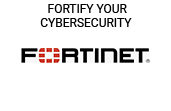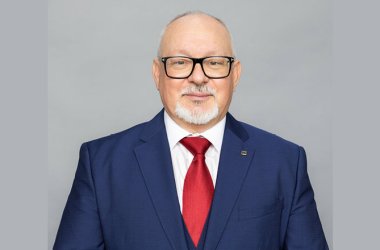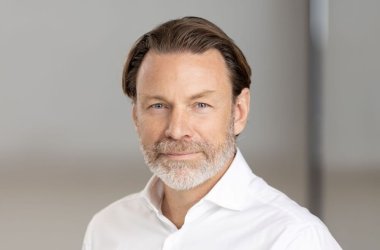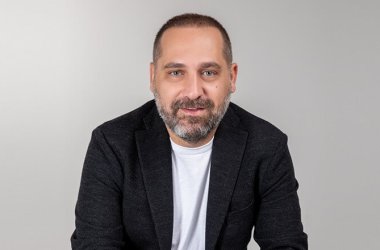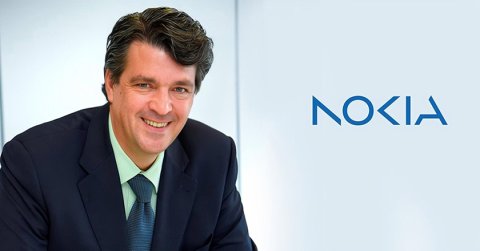
Roque Lozano, Senior Vice President of Network Infrastructure, Middle East and Africa at Nokia, shares how the company is driving sovereign, AI-ready infrastructure, advancing quantum-safe security, and shaping the region’s digital future in line with Saudi Vision 2030 and the UAE’s AI Strategy 2031.
Middle East digital transformation is accelerating, and network infrastructure has become the invisible backbone of national progress. From smart cities and AI-driven industries to sovereign data and mission-critical services, the region’s connectivity ambitions demand reliability, scale, security, and sustainability—delivered without compromise. Roque Lozano, Senior Vice-President of Network Infrastructure, Middle East and Africa, Nokia, spoke to Tahawultech.com on how Nokia is advancing open, interoperable networks, preparing for quantum-safe security, and enabling sovereign, AI-ready data centres aligned with Saudi Vision 2030 and the UAE’s AI Strategy 2031.
Interview Excerpts:
Nokia often speaks about trusted performance and scale. How is Nokia ensuring that its network infrastructure continues to deliver reliability and ROI for governments and enterprises in the Middle East, especially as demand for high-capacity, always-on services grows?
Networks are the invisible backbone of the digital economy, powering cities, industries, and governments. At Nokia, we focus on making that foundation secure, scalable, and sustainable so that service providers, enterprises, and public entities can rely on it without interruption. Nokia supports networks serving over 6.6 billion subscriptions worldwide, with technology underpinning critical infrastructure across the Middle East. In Saudi Arabia, we deployed the first 25G PON neutral-host fibre network, setting new benchmarks for performance. In the UAE, our AI-powered Wavesuite trial with du halved optical network planning time and cut costs by 30%. These innovations prove that performance and efficiency go hand in hand.
There’s a lot of discussion around open and interoperable networks. Can you explain what “open by design” means in practice, and how Nokia’s approach is helping Middle East operators and enterprises embrace growth with agility?
The future of networking is open. Closed, single-vendor systems are history — customers now demand agility, interoperability, and innovation freedom. Nokia’s “open by design” approach delivers modular, standards-aligned infrastructure that evolves with technology. As a founding member of the Telecom Infra Project and the O-RAN Alliance, we are shaping the frameworks that make true openness possible. The result is agility and efficiency. Our Open Optical Line Systems and NetOps automation tools enable faster deployment and lower ownership costs. Across the GCC, this openness underpins national broadband, smart cities, and private enterprise networks — transforming openness from a technical feature into a business advantage.
Quantum computing is often spoken of as both an opportunity and a threat. Why is quantum-safe networking such a critical issue for the region, and how is Nokia working with governments and operators to get ahead of the “Harvest Now, Decrypt Later” risk?
Quantum computing will transform industries — and cybersecurity. Data encrypted today could be captured and decrypted later once quantum systems mature — the “harvest now, decrypt later” risk. Gartner predicts that by 2029, traditional cryptography will be unsafe, making the shift to post-quantum cryptography urgent. At Nokia, quantum-safe networking is central to our security strategy.
“In collaboration with Nokia Bell Labs, we’re advancing post-quantum cryptography and quantum key distribution to protect data from optical networks to the application layer. For the Middle East, this safeguards national data and supports long-term resilience in line with Saudi Vision 2030 and the UAE’s National Innovation Strategy.”
AI workloads and new data sovereignty regulations are reshaping infrastructure strategies in the GCC. How is Nokia enabling sovereign, AI-ready data centers and what role does this play in national digital agendas like Saudi Vision 2030 and the UAE’s innovation strategy?
Across the Gulf, data centres are the new power plants, driving AI innovation and digital governments. As AI workloads rise, nations are prioritising sovereign cloud and AI-ready infrastructure to process and secure data locally. IDC projects global data centre energy use will more than double between 2023 and 2028, making efficiency crucial. Nokia addresses this through high-performance, secure, and scalable interconnect solutions that meet both performance and compliance needs. Our network-cloud continuum links national clouds, edge sites, and core networks into one intelligent ecosystem — ensuring sovereign control, lower latency, and energy efficiency. This aligns with regional strategies like Saudi Arabia’s Cloud First Policy and the UAE’s AI Strategy 2031, supporting security, sustainability, and innovation leadership.
What do you see as the most pressing priorities for the region’s critical infrastructure providers, and how is Nokia positioned to remain a trusted partner in their digital transformation journeys?
The future can be defined by three words: resilience, security, and sustainability. Networks must scale for growing data, stay cyber-resilient, and support the region’s sustainability goals across every layer — from subsea cables to data centres and edge networks — to enable a secure, end-to-end digital experience. According to GSMA, 5G will become a key driver of economic growth across MENA, transforming sectors like manufacturing, oil and gas, healthcare, and smart cities. But this growth must be energy-efficient — our optical and broadband solutions reduce power consumption by up to 60%. Looking ahead, Nokia is shaping 6G standards globally, integrating AI, sensing, and ultra-low latency into one intelligent network fabric. Our strength lies in listening first — aligning with each customer’s national or industrial vision, then applying Nokia’s innovation across infrastructure, cloud, and mobile networks to power the Middle East’s digital future.


